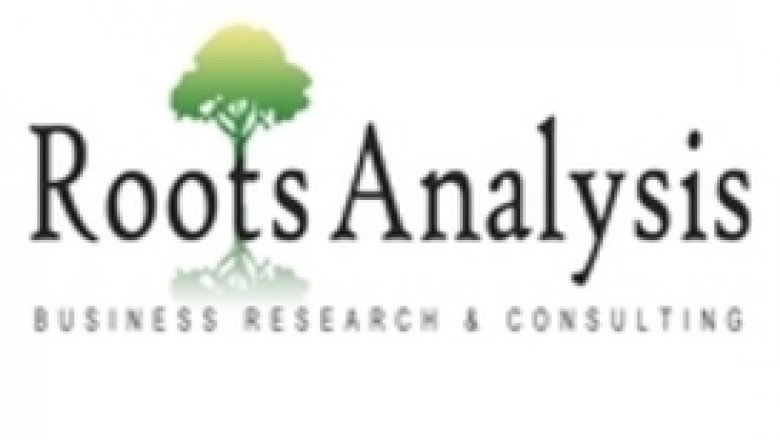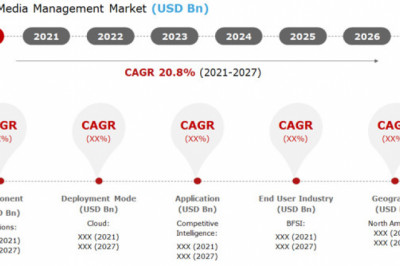views

London
Roots Analysis has announced theaddition of “Targeted Protein Degradation Market, 2021-2030” reportto its list of offerings.
Small-molecule-induced protein degradation hasbeen demonstrated to possess the potential to drug a broader range of proteinaceousbiological targets. It involves the selective recruitment of the body’sinherent protein degradation pathways, to eliminate disease causing /associated proteins, using bifunctional small molecule drugs. Presently, themost popular and promising class of interventions in this field of research, isproteolysis targeting chimeras (PROTACs); these can simultaneously bind atarget protein and an E3-ubiquitin ligase, and thereby, facilitate theselective ubiquitination and eventual proteasome-mediated degradation of thetarget protein. The most interesting feature of this mechanism of drug actionis the fact that PROTACs and other targeted protein degraders can eliminate proteintargets regardless of their function.
To order this 330+ pagereport, which features 115+ figures and 180+ tables, please visit this link
KeyMarket Insights
Presently,more than 150 targeted protein degradation-based therapeutics are currentlyunder development
Around75% of the aforementioned candidates are in the preclinical and discoverystages, followed by those that are being evaluated in clinical trials (25%). Thethese degrader molecules are PROTAC (26), followed by DUB inhibitors (15%),protein homeostatic modulators (14%) and SERDs/SARDs (13%).
Over40 targeted protein degradation enabling technologies are presently available /under development
Ofthese, the PROTAC® platform is presently considered the most popular, with 15 productcandidates, developed using the same technology, under investigation. On theother hand, there are presently 10 technologies that are designed to design /develop DUB inhibitors.
Around 80companies claim to be engaged in the development of targeted proteindegradation-based therapeutics
Post 2010,there has been a notable surge in the number of companies developing targetedprotein degraders. Majority of the firms engaged in this field (57%) are basedin North America, followed by Europe (27%) and the Asia Pacific (16%).
Over80 registered clinical trials are presently assessing targeted proteindegradation-based therapeutics, worldwide
It isworth mentioning that most of the clinical research in this direction is beingconducted in Europe (60%), followed by North America and the Asia Pacific. However,more than 40% of the total number of patients enrolled in such trials are in NorthAmerica.
Over 770 grants have been awarded to support research on targetedprotein degradation-based therapeutics, since 2016
Anestimate total of USD 345 million in grants have been awarded to variousorganizations working in this domain, during the period between January 2016 toDecember 2020. Almost 40% of the total number of grants were provided by theNational Cancer Institute.
More than14,500 patents have been filed / granted related to targeted proteindegradation enabling technologies, since 2018
Around50% of these intellectual property documents were filed / granted in the US;other key regions with significant intellectual capital include Australia, China,Japan, Canada and Korea. Leading non industry players (in terms of the sizeof intellectual property portfolio) include the University of California, MassachusettsInstitute of Technology, Broad Institute, Harvard College and Dana FarberCancer Institute.
Partnershipactivity within this domain has grown significantly between 2014 and 2021
The maximum number of partnerships for targetedprotein degradation-based therapeutics were signed in 2018. R&D agreements(25%) and research agreements (23%) emerged as the most popular types ofpartnership models adopted so far, by stakeholders in this industry.
Over USD 5 billion has been invested by both private andpublic investors, since 2014
Companies involved in the development of targetedprotein degradation-based therapeutics have raised around USD 2.3 billionthrough venture capital financing, which represents 43% of the total capitalraised in the given time period. Overall, more than 180 investors have activelyfinanced projects / initiatives in this domain.
Presently,the market is driven by revenues from therapy development enabling technologies;it is anticipated to grow at a CAGR of around 27%, till 2030
Over50% of the technology licensing-related opportunity is associated with platformsintended for drugs targeting oncological disorders; this trend is unlikely tochange in the foreseen future. North America is expected to capture over 55% ofthe market share by 2030.
To request a sample copy /brochure of this report, please visit this link
Key Questions Answered
§ Who are the leading industry andnon-industry players in this market?
§ What are the key therapeuticareas for which targeted protein degraders are being / have been developed?
§ Which geographies are more activein conducting clinical trials on targeted protein degraders?
§ What kind of partnership modelsare commonly adopted by industry stakeholders?
§ Which are the leadingadministering institute centers supporting research in this domain?
§ What is the trend of capitalinvestments in the targeted protein degradation market?
§ How has the intellectual propertylandscape in this market evolved over the years?
§ How is the current and futuremarket opportunity likely to be distributed across key market segments?
The USD 3.3billion (by 2030) financial opportunity within the targeted protein degradationenabling technologies market has been analyzed across the following segments:
§ Type of Payment
§ Upfront Payment
§ Milestone Payment
§ Types of ProteinDegraders
§ Degronimids
§ PROTACs
§ SARDs / SERDs
§ Specific BET and DUBInhibitors
§ Other Inhibitors
§ Therapeutic Areas
- Oncological Disorders
- Neurological Disorders
- Others
§ Route of Administration
§ Oral
§ Intravenous
§ Others
§ Key GeographicalRegions
§ North America
§ Europe
§ Asia-Pacific
Theresearch includes detailed profiles of key players (listed below); eachprofile features an overview of the company, its financial information (if available), brief descriptionsof its proprietary drug(s) and an informed future outlook.
§ Arvinas
§ AstraZeneca
§ BioTheryX
§ C4 Therapeutics
§ Captor Therapeutics
§ Celgene
§ Genentech
§ Hinova Pharmaceuticals
§ Kangpu Biopharmaceuticals
§ Kymera Therapeutics
§ Mission Therapeutics
§ Progenra
§ Radius Health
§ Sanofi Genzyme
§ Zenopharm
For additional details, pleasevisit
https://www.rootsanalysis.com/reports/view_document/protein-degradation-market/289.html
or email sales@rootsanalysis.com
You may also be interested in thefollowing titles:
1. Immunocytokines Market, 2021–2030
2. Non-Viral Drug DeliverySystems Market, 2021-2030
3. TCR-based TherapiesMarket, 2021-2030
Contact:
Gaurav Chaudhary
+1 (415) 800 3415
Gaurav.Chaudhary@rootsanalysis.com












